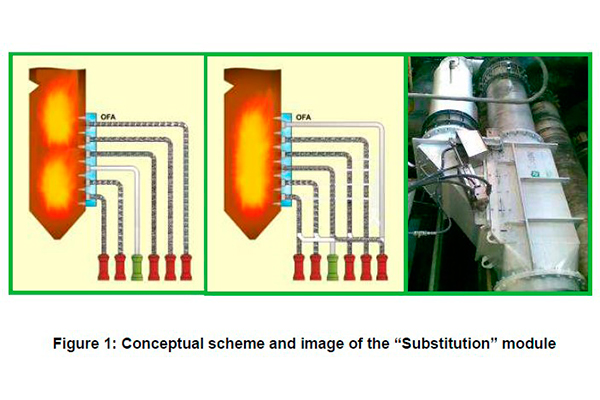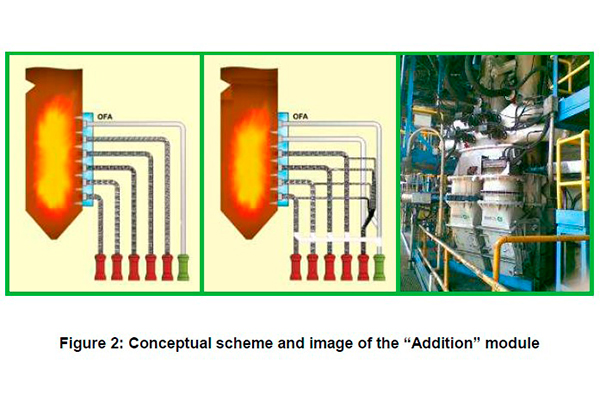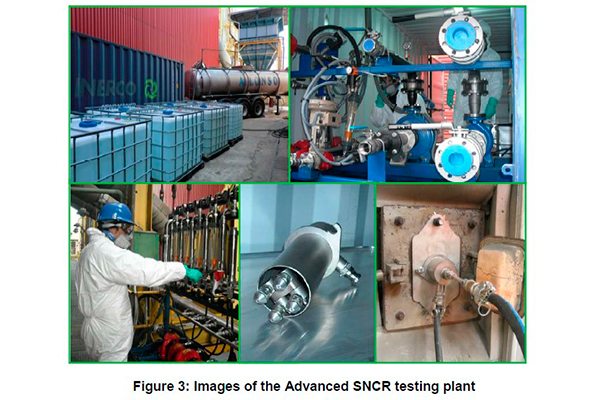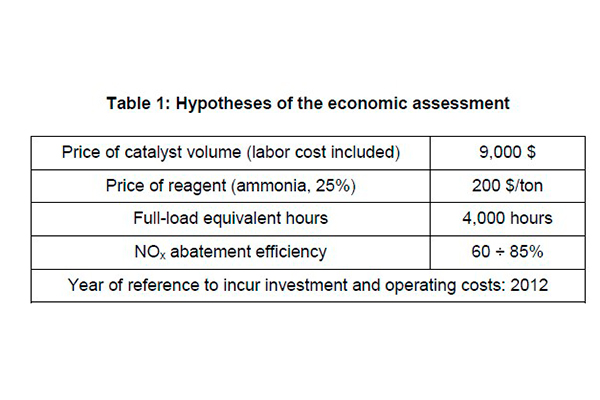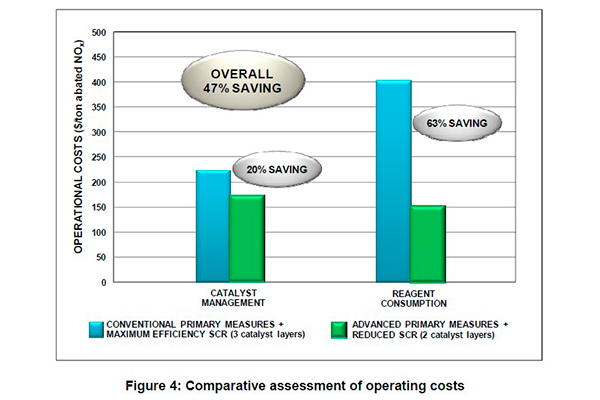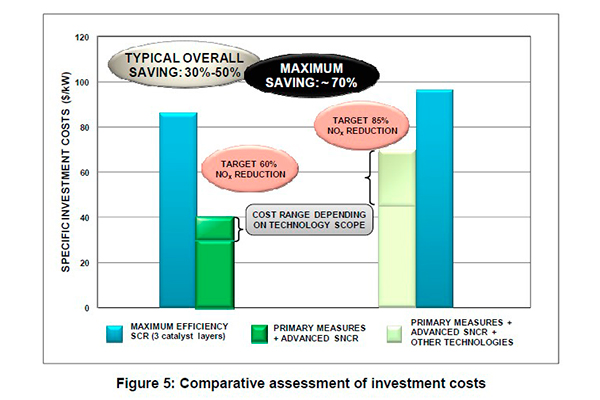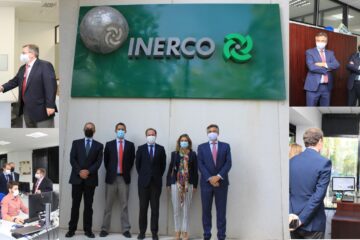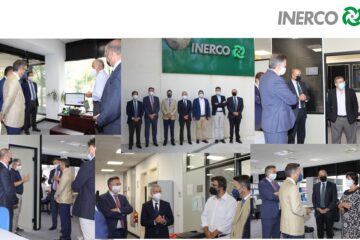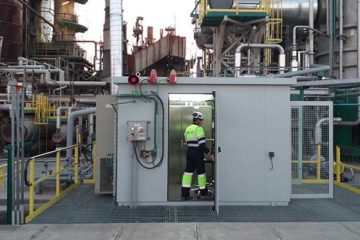Cost-Effective alternatives or complementary solutions To SCR Technology
INTRODUCTION
Increasingly stringent worldwide environmental legislation is requiring the coal power sector to install high-efficiency abatement technologies to comply with the pollutant emission limits imposed by the applicable national standards. At the same time, the industrial sector is also required to take into account profitability criteria, not only in the decision-making process of undertaking retrofit actions in their facilities, but also in their day-to-day operation to minimize current operating costs. Nitrogen oxide (NOx), which is one of the most damaging environmental pollutants due to its inherent negative influence on human health and natural ecosystems, as well as its indirect impact on global climate change, is being specifically targeted. Therefore, regulation of this contaminant is becoming particularly severe worldwide. In order to meet the imposed emission limits, the exclusive application of primary measures (combustion control), such as combustion tuning, low-NOx burners and overfire air (OFA) systems, have been proven to be insufficient under most circumstances.
Among the post-combustion (secondary measures) NOx abatement systems commercially available, Selective Catalytic Reduction (SCR) is the most appropriate and widely used technology to reach the high reduction efficiencies required. However, the installation or use of conventional catalytic solutions in existing combustion facilities has technical and economic drawbacks.
First, the installation of a separate SCR system reactor is technically difficult in most existing facilities due to the lack of available space to undertake such a significant retrofit action. Besides, this solution might not be optimized from an economic viewpoint, as it leads to extremely high investment costs that would seriously jeopardize the profitability of the facilities, bringing serious difficulties to amortize the investment, especially in those power plants with a short remaining lifetime. Also, it entails high annual operating costs and a loss of efficiency that affects plant profitability.
Second, in those facilities where SCR systems are already installed, their significant operating costs bring about a pressing need to optimize their performance through the reduction of reagent consumption or the improvement of catalyst management. Considering current power plant operating trends, characterized by frequent startups and shut-downs and increasingly long part-load operating periods, the lack of flexibility shown by SCR systems makes it even more difficult to justify the investment and operating costs required to achieve the target NOx emissions limits.
Facing this complex scenario, characterized by the lack of technological alternatives to SCR systems, INERCO has developed a methodology and technical approach based on the integration of advanced primary and secondary measures for the reliable and cost-effective minimization of NOx emissions in any operating scenario. This approach can be customized based on the specific design and operating conditions of each combustion facility. Consequently, it constitutes a cost-effective alternative to new SCR systems due to the considerable savings in investments costs combined with an effective complementary solution to existing SCR systems, and is able to produce remarkable reductions in operating costs.
This paper is focused on the description of the novel technological solutions conceived by INERCO, a report of the results achieved by applying and integrating these technologies in different coal-fired power plants and, finally, an economic assessment with respect to conventional SCR technologies.
TECHNOLOGICAL APPROACH
The integrated approach developed by INERCO relies on a synergic combination of advanced primary and secondary measures. The purpose of the proposed primary measures is to achieve minimum NOx emissions compatible with combustion control and process safety through the optimization of the coal distribution to the burners. This is achieved by retrofitting the pulverized coal distribution system with advanced regulation capabilities. This approach is enhanced by incorporating improved process control using other advanced monitoring technologies already developed and demonstrated by INERCO.
Starting from a safe low NOx operating condition, the following approach uses an integration of tailor-made secondary measures. In this regard, INERCO has developed DeNOx solutions with advanced capabilities to achieve optimum results in large-sized boilers. The main features of the most recent technologies developed by INERCO are described below.
Advanced primary measures: FLEXICOM-LNB
Fuel staging and burners-out-of-service (BOOS) are generally accepted as suitable NOx emission reduction techniques for pulverized coal combustion units. However, the actual applicability of these techniques is hampered by two main factors.
First, the appearance of operating problems (increase in carbon-in-ash, efficiency losses, etc.) when trying to implement these techniques. Second, the impossibility of maintaining the most favourable coal and air distribution, due to necessary maintenance actions on the milling systems, which leads to increased NOx emissions, carbon-in-ash or furnace temperatures.
These limitations are overcome by the use of the novel FLEXICOM-LNB technology which improves the application of those techniques while avoiding the appearance of the aforementioned collateral negative effects. This technology relies on the retrofit of the pulverized coal distribution system with novel regulation capabilities, enabling the adoption and steady maintenance of an optimum “in-furnace firing distribution”. This leads to the minimization of NOx generation for all operating scenarios and keeps boilers from unfavourable situations linked to unavoidable mill maintenance activities.
This objective is achieved by retrofitting the pulverized fuel distribution system with two different regulation devices:
- Substitution System – designed to provide a steady air and fuel supply irrespective of mills in service, and so, avoiding unwanted scenarios promoted by mill unavailability, such as “burner gaps”, which produce increased NOx emissions and carbon-in-ash (Figure 1).
- Addition System – Achieves maximum fuel stratification and coal residence time, without increasing mill production and, therefore, without penalizing coal fineness (Figure 2).
In addition to reductions in NOx emissions, the beneficial features of both systems lead to the optimization of boiler efficiency and heat rate. This is due to the enhanced grinding potential of the mills and the increased residence time of the pulverized coal, which favour the minimization of CO emissions and the control of unburned carbon-in-ash. In addition, the combustion process is not shifted to the upper furnace region as it happens for high performance over-fire air (OFA) solutions, resulting in an effective way to control furnace temperatures (flue gas, radiant superheater (SH) surface, live steam, etc.) and desuperheater spray flow rates.
This approach also provides increased boiler and milling system availability and optimizes operating flexibility, since FLEXICOM-LNB fits any boiler load or milling system arrangement. This enables the use of lower quality coals and co-firing of alternative fuels. In addition, maintenance programs used by the utility are not affected by operating constraints. Consequently, the optimized operating scenarios promoted by this technology can be a long-term operating solution.
Finally, this technology is complementary with other NOx reduction technologies and provides an added potential for NOx reduction. In addition, the resulting operating scenarios promote an increased furnace region for reburning secondary fuels and favourable conditions for the injection of ammonia or urea in the high-temperature furnace areas.
Secondary measures: Advanced SNCR technology
In order to minimize NOx emissions under a cost-effective approach, INERCO has developed an Advanced SNCR technology characterized by the capability to control the reagent injection individually in each lance based on the flue gas conditions near the injection point. The characterization of the flue gas provides the temperature profile and composition (NOx, O2 and CO), that are the key performance parameters in the SNCR process, upstream the injection zone:
- Temperature – O2 and CO concentrations define the operating temperature window where the abatement reactions occur at high efficiency rates.
- NOx profiles – NOx profiles are produced in the combustion zone based on the specific design of the boilers. However, these profiles are non-uniform and not constant over time due to the dynamics linked to the combustion process. Precise knowledge of the NOx content in the injection zones is needed to achieve optimized injection of the correct reagent quantity per injection port.
Two direct benefits are obtained from this optimized injection approach: higher NOx reduction rates compared with conventional applications, and minimization and effective control of ammonia slip.
This approach has been validated by INERCO using the Advanced SNCR demonstration plant, designed by INERCO and installed in a coal-fired power plant (Figure 3), and characterized by increased flexibility and adaptability to different scenarios in the following ways:
- Adaptability to large-sized boilers with power outputs of up to 600 MWe.
- Modular design that is easily adapted to any combustion facility and type of boiler.
- Possibility to employ different reagents, such as ammonia or urea, with fully adjustable levels of dilution.
- Applicability of a novel NOx abatement technique called Double Temperature Window SNCR (DTW SNCR), to inject ammonia-based reagents in both medium-temperature and high-temperature furnace locations.
- Individual tuning of injection lances to achieve a differential reagent supply in different furnace zones.
- Lances especially designed to optimize the mixture of the reagent and the flue gas, covering wide furnace areas.
- Easy integration with any NOx reduction technology and high synergy with infurnace monitoring technologies.
In general, the maximum potential of non-catalytic secondary measures, such as SNCR, has been shown in small industrial boilers. However, the abatement efficiency achieved in larger coal-fired power units has been lower, mainly due to their size and the difficulties in identifying optimum temperature windows with variable operating scenarios.
The approach designed by INERCO is intended to overcome these limitations by achieving an optimized and highly flexible injection of reagents with an increased area of influence in both high-temperature and medium-temperature furnace locations. In addition, the availability of advanced in-furnace monitoring capabilities already developed by INERCO assures an optimized implementation of injection profiles in the most suitable furnace areas and improves the integration of primary and secondary measures.
SUMMARY OF RESULTS
The FLEXICOM-LNB approach has been validated in a number of coal-fired power plants. A specific example was achieving full integration with combustion optimization technologies, based on advanced in-furnace monitoring systems, in a 580 MWe tangentially-fired boiler. As a result, it was possible to reach NOx emissions reductions ranging from 35% to 45% in this unit. These results were attained for a wide range of operating conditions:
- Unit load: MCR, medium load (66% MCR) and MSG (30% MCR).
- Coal composition: diverse bituminous coals with variable contents in moisture, ash, volatile matter and nitrogen.
- Milling system arrangement, including unfavorable operating scenarios with upper mills in service.
Besides the NOx reductions achieved, combustion performance was also extensively monitored by closely monitoring diverse parameters, such as carbon-in-ash, infurnace temperatures, O2 and CO concentrations, boiler efficiency, etc.
Thus, the sale of ash to the cement industry was guaranteed by an steady fulfilment of the most severe unburnt carbon-in-ash limits, without penalizing boiler efficiency (in specific cases, it was improved up to a maximum value of 0.6%), and without negative influence on steam cycle parameters. Moreover, maintenance strategies were also optimized, contributing to increased future plant availability.
These outcomes indicate that the exclusive application of FLEXICOM-LNB may result in a cost-effective complement to other NOx abatement technologies, as shown in the following economic assessment section. Moreover, the application described turns out to be the most favorable scenario to take before the implementation and integration of the DeNOx approach developed by INERCO.
In addition, the full integration of the primary and secondary measures pursued by INERCO was accomplished in another coal-fired power plant. The plant is a 350 MWe arch-fired boiler burning a blend of anthracite and bituminous coal. Conducting more than 130 injection tests using either ammonia or urea enabled INERCO to demonstrate the feasibility of the SNCR technology in this industrial power unit, achieving up to 50% NOx reductions and fully-sustainable minimized ammonia slip by the sole application of the Advanced SNCR approach. However, the combined application of the Advanced SNCR technology with optimized combustion strategies based on FLEXICOM-LNB approach and advanced combustion monitoring led to a global 70% NOx emissions reduction, while holding ammonia slip below 7 ppmv (equivalent to approximately 0.16 lb/MMBTU). The NOx emissions achieved was close to the 2018 emission limit imposed by the European environmental legislation for this power unit.
The results achieved show the existence of alternative technological solutions to SCR in order to comply with the emission limits imposed on coal-fired power plants. The technological approach developed by INERCO is characterized by its high flexibility, which can be customized based on the specific design and operating conditions of each power unit.
ECONOMIC ASSESSMENT
The economic assessment takes into consideration two different scenarios in the targeted power plant. In both scenarios it is necessary to establish a series of hypotheses to make an accurate and comparable estimate of investment and operating costs. Different parameters have been fixed with representative estimates, including the cost of different supplies (catalyst and ammonia-based reagent) or the number of equivalent full-load hours (Table 1).
If an SCR system has already been installed (Scenario 1), the economic analysis should target a comparison of operating costs to reach a precise NOx reduction efficiency. Two different cases are considered:
- Conventional case: Conventional primary measures and exclusive performance of the SCR system with maximum abatement potential.
- Optimized case: Combined application of optimized primary measures including FLEXICOM-LNB and the SCR system with reduced scope (e.g. reduction of one catalyst layer).
Assuming a target NOx reduction efficiency of 80%, the results achieved when comparing these cases show a 62% reduction in ammonia consumption and a 20% reduction in catalyst volume. Therefore, the operating costs linked to reagent and catalyst savings are reduced from $620 to $330 per ton of abated NOx. These results are clearly shown in Figure 4.
This analysis has been extrapolated to other representative scenarios, which establishes typical operating cost savings ranging from 40% to 60% when installing advanced primary measures based on the FLEXICOM-LNB technology. The savings achieved result in Return-on-Investment (ROI) periods as low as 1-2 years, based on the specific conditions of each facility. The catalyst replacement cost was not considered in this analysis because is highly dependent on the outage flexibility of the plant. Still additional savings should be considered for this reason.
When the SCR system is not available in the target power facility (Scenario 2), the comparative assessment to be made should focus on the estimated investment costs to reach the required NOx emissions levels. The approach to be implemented would vary based on the specific design and operating conditions of each combustion facility. However, the exclusive application of optimized primary measures and SNCR may not be enough to achieve the highest NOx reduction rates. Therefore, the scope of the approach should be widened by applying additional NOx reduction techniques, such as reburning, high-temperature reagent injection or nonconventional catalytic technologies.
Assuming a NOx reduction efficiency ranging from 60% to 85%, the comparative economic assessment between SCR and other alternative approaches leads to significant capital costs reductions, as shown in Figure 5. Considering a required 60% NOx reduction, the implementation of FLEXICOM-LNB and the Advanced SNCR system would fulfill the requirements with associated capital costs reductions over 50% compared with conventional SCR approaches. In this case, the investment cost of the SCR system considered is 85 $/kW, and for the optimized approach 30-40 $/kW (approximately equally divided between FLEXICOM-LNB and Advanced SNCR system).
If an 85% of NOx reduction is required, capital costs associated with the SCR system are around $95/kW. In this case the alternative approach based on FLEXICOM-LNB and Advanced SNCR requires complementary technologies. The investment cost linked to the additional implementation of reburning, high-temperature reagent injection and non-conventional catalytic technologies are in the range of $15- $30/kW, then, the total costs of this approach are $45-$70/kW depending on the required retrofit. When extrapolating this assessment to other representative operating scenarios, it can be concluded that the savings in investment costs would typically vary from 30% to 50%. However, in some particular scenarios this saving can be increased up to values around 70%.
CONCLUSIONS
The challenge of achieving NOx emission limits imposed by environmental legislation, while preserving the profitability of industrial combustion facilities, requires a careful analysis to implement an optimized approach. Some generating companies may decide to only install conventional catalytic solutions (SCR), which is the most reliable technology to reach the most stringent NOx emissions levels. Although this may be the most straight-forward technological alternative, it is definitely not the most cost-effective solution.
INERCO has developed and validated a state-of-the-art technological approach incorporating the joint integration of advanced primary and secondary measures. This approach can be customized based on specific plant conditions and can be a valuable complement or a reliable alternative to SCR technology. The approach described is based on novel primary technologies, such as FLEXICOM-LNB, conceived to take full advantage of optimized coal supply profiles, or non-catalytic NOx abatement techniques (Advanced SNCR) specifically designed to achieve maximum NOx abatement efficiencies in large-sized boilers. Both solutions are highly complementary, as they can be easily integrated by applying INERCO advanced infurnace monitoring technologies.
The application of this approach in full-scale coal-fired industrial facilities has provided remarkable results with up to 70% NOx abatement efficiencies, while avoiding the appearance of collateral problems (penalizations in carbon-in-ash, boiler efficiency or temperatures, and ammonia slip). The economic assessment developed shows how this innovative approach can be considered as an alternative solution to conventional catalytic solutions based on the reduced investment costs achieved, typically ranging from 30% to 50%, with maximum savings around 70% for particular operating scenarios. In addition, it may also be an effective complement to SCR technology due to the reduction in operating costs, generally varying from 40% to 60%.
KEYWORDS
NOx, combustion, optimization, FLEXICOM-LNB, SNCR, SCR, ABACO, primary measures, secondary measures
Enrique Bosch
Francisco Rodriguez Barea
Enrique Tova
Miguel Ángel Delgado
Miguel Morales
John W. Sale


